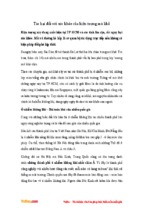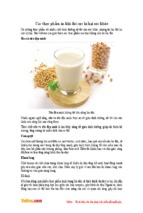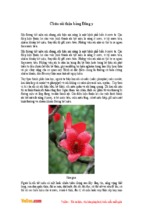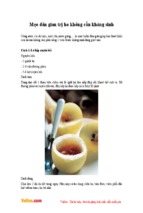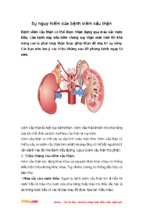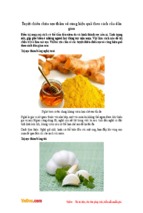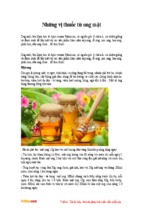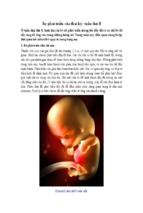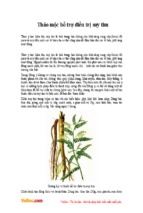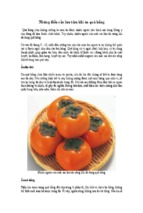Water Dynamics in Plant Production
Psalm 65, 9–10
You care for the land and water it;
you enrich it abundantly.
The streams of God are filled with water
to provide the people with corn,
for that is how you prepare the land.
You drench its furrows
and level its ridges;
you soften it with showers
and bless its crops.
Water Dynamics in Plant Production
Wilfried Ehlers
University of Göttingen
Germany
and
Michael Goss
University of Guelph
Canada
CABI Publishing
CABI Publishing is a division of CAB International
CABI Publishing
CABI Publishing
CAB International
875 Massachusetts Avenue
Wallingford
7th Floor
Oxon OX10 8DE
Cambridge, MA 02139
UK
USA
Tel: +44 (0)1491 832111
Fax: +44 (0)1491 833508
E-mail:
[email protected]
Website: www.cabi-publishing.org
Tel: +1 617 395 4056
Fax: +1 617 354 6875
E-mail:
[email protected]
© CAB International 2003. All rights reserved. No part of this publication may be
reproduced in any form or by any means, electronically, mechanically, by photocopying, recording or otherwise, without the prior permission of the copyright
owners.
A catalogue record for this book is available from the British Library, London,
UK.
Library of Congress Cataloging-in-Publication Data
Ehlers, Wilfried.
Water dynamics in plant production / Wilfried Ehlers and Michael Goss.
p. cm.
Includes bibliographical references (p. ).
ISBN 0-85199-694-9 (alk. paper)
1. Crops and water. 2. Plant-water relationships. I. Goss, M. J. II.
Title
S494.5.W3E37 2003
633--dc21
2003004154
ISBN 0 85199 694 9
Typeset by Wyvern 21 Ltd, Bristol
Printed and bound in the UK by Biddles Ltd, King’s Lynn
Contents
Preface
Abbreviations
1
1.1
viii
x
1.2
1.3
1.4
The Role of Water in Plant Life
Functions of Water in the Plant
Box 1.1: Light and water – prerequisites of photosynthesis
Adaptation Strategies of Plants to Overcome Water Shortage
Water and Net Primary Production
Water and Type of Vegetation
2
2.1
2.2
The Role of Water in Soil
Soil Genesis and Soil Functions
Soil Fauna and Vegetation Cover
10
10
12
3
3.1
3.2
The Interdependency of Soil Water and Vegetation
The Significance of the Soil for Water Storage
Transpiration and Seepage of Water with Different Types of Vegetation
15
15
16
4
4.1
4.2
Properties and Energy State of Water
Physical–Chemical Properties
The Concept of Water Potential and the Darcy Equation
20
20
22
5
5.1
5.2
Water Storage and Movement in Soil
Fundamentals and Principles
Evaporation
Box 5.1: Measuring soil water
Infiltration and Water Transport
Box 5.2: Preferential flow
26
26
35
35
43
47
6.3
The Root – the Plant’s Organ for Water Uptake
The Role of the Root in the Plant
Structure of the Root Tip
Box 6.1: Methods of studying roots
Root Systems
49
49
51
52
56
7
7.1
The Water Balance of the Plant
Water Potentials in Plant Cells
64
64
5.3
6
6.1
6.2
1
1
2
3
5
6
vi
7.2
7.3
Contents
Water Uptake by Roots
Transpiration by Leaves
Box 7.1: Early experiments for determining water suction and water pressure of roots
The Action of Stomatal Guard Cells
Water Transport within the Plant
Water Potentials in Plants
Box 7.2: Searching for the cause of sap ascent
67
71
72
76
77
80
82
8
8.1
8.2
8.3
The Plant as a Link between Soil and Atmosphere: an Overview
The Soil–Plant–Atmosphere Continuum (SPAC)
Potential Evapotranspiration
Relations between Potential Evapotranspiration, Soil Water and Transpiration
85
85
86
89
9
9.1
9.2
9.3
9.4
9.5
9.6
9.7
9.8
Water Use by Crops
Growth of Roots and Leaves
Leaf Area Index and Transpiration
Root System Development and Water Uptake
How Much of the Soil Water is Extractable by Plant Roots?
Stomatal Control of Water Vapour Loss
Water Use Throughout the Growing Season
How to Determine the Components of the Field Water Balance
Numerical Simulation
Box 9.1: How lysimeters work
Box 9.2: Measurement of water flow through plants
95
95
95
100
106
109
110
113
117
118
120
10
10.1
10.2
Radiation and Dry Matter Production
Radiation and Net Photosynthesis of Single Leaves
Radiation Interception and Dry Matter Accumulation in Crop Stands
123
123
125
11
11.1
11.2
11.3
Water Use and Dry Matter Production
Relations and their Optimization
The Transpiration Ratio and a Related Standard
Box 11.1: The saturation deficit of the air determines transpiration efficiency
Water Use and an Estimate of Dry Matter Production
132
132
135
135
139
12
12.1
12.2
12.3
Influence of Nutrient Supply on Water Use and Establishment of Yield
Yield Dependency on Water and Nutrient Supply
Influence of Nutrient Supply on the Relationship between Water Use and Yield
Transpiration Efficiency and Fertilizer Application
141
141
144
149
13
13.1
13.2
13.3
Yield Formation under Inadequate Water Supply
Physiological Reactions and Assimilate Partitioning
Economic Yield
Water Shortage at Different Phenological Stages
153
153
156
159
14
14.1
14.2
Water Stress in Plants
Measuring Water Stress in Plants
How Plants Perceive Water Stress
Box 14.1: Signalling between roots and shoots
165
165
171
174
15
15.1
Climatic Factors Influencing Yield
Growth-limiting Climatic Factors
176
176
7.4
7.5
7.6
Contents
vii
15.2
15.3
Climate Change
Plants, Soils and Cropping Pattern in a Changing Environment
184
187
16
16.1
16.2
Breeding for Yield and Water Use
Comparing Old and New Cultivars
Future Strategies in Plant Breeding
192
192
196
17
17.1
17.2
17.3
17.4
17.5
Controlling the Soil’s Water Balance by Soil Management
Which of the Balance Components can be Changed?
Controlling Infiltration
Controlling Evaporation
Increasing the Quantity of Extractable Soil Water
Conservation Tillage
199
199
200
206
207
210
18
18.1
18.2
18.3
18.4
Controlling Water Use by Crop Management
Crop Rotation
Choice of Species and Cultivars
Seeding and Stand Density
Fertilizer Application
217
217
224
225
230
19
19.1
19.2
19.3
19.4
19.5
19.6
Irrigation
Need, Concerns, Problems
Tapping Water – the Basis of Early Civilizations
Water Requirement of Crops
Timing and Adjusting the Application of Water
Efficient Water Use
Irrigation Methods
234
234
236
237
238
240
243
20
Epilogue
247
References
Index
248
263
Preface
The source of life is water. Life began in the
oceans, which represent the largest stock of water
on Earth. Much less water is stored below the land
surface in the form of fresh groundwater, amounting to not quite 0.8% of the earth’s total water
reserves, while lakes and rivers combined only
contribute a further 0.007%. Therefore terrestrial life depends primarily on the global water cycle.
This cycle makes the land productive by the infusion of fresh water precipitation, originating from
the salt water of the oceans. However, in many
regions the precipitation does not provide a sufficient or reliable source for the sustained presence
of plants and animals. In fact, in all regions, precipitation proves to be highly variable in time and
space, and human activities that have led to global warming have also increased the variability and
intensity of rainfall.
Assimilation and biomass production in natural plant communities are intimately linked to
water use through transpiration. The same is true
for agricultural crops. However, extreme weather
events like drought and torrential storms threaten agricultural enterprises and the well-being of
an ever increasing world population. Three-quarters of the renewable fresh water resources used
by mankind are consumed in irrigated agriculture,
but such practices are at risk in several regions for
varying reasons. These include climate change,
weather variability, decline in groundwater
reserves owing to over-utilization, and the degraviii
dation of soil and water quality. The 21st century has been referred to as the ‘century of water’.
At the world food summit held in Rome in 1996,
water was identified as the major threat to food
security. The global water crisis is predicted to
intensify within the coming decades. Areas of
acute water shortage are expected to spread,
particularly to large regions of Africa and the
Middle East.
In an age characterized by an increasing
demand for fresh water and at the same time by
an actual decline in reliable water resources for
both rainfed and irrigated agriculture, conservation of water is essential. Agricultural water
management must aim to eliminate unproductive
water losses and optimize transpirational water
use. The goal is to achieve optimum economical
yields per unit of water used without compromising the environment. The development of an
understanding how to approach such a goal is a
central theme of this book.
Terrestrial plants obtain their water supply
from the soil. They use their root system to access
the water held within the soil profile, and transpire the water into the atmosphere. Plants
provide, therefore, the most important link
between the liquid phase of water in the soil and
the gaseous form – water vapour – in the atmosphere. We focus on the main causes and processes
that govern water movement through this continuum between soil, plant and the atmosphere.
Preface
Flows and exchange processes that take place
when water enters and leaves cropped land are
explained. Moreover, the responses of plants to a
decline in the water supply are highlighted. Both
topics, water movement and responses to water
stress, are essential for exploring practices in soil
and crop management that enhance the efficiency of water use in plant production.
Crop plants are grown under a wide range
of climates. For that reason, there is a need for a
range of management strategies. These include
both matching the water supply with the given
soil and climate as well as the provision of additional resources through irrigation. We have used
information from case studies, dealing with management systems in various parts of the world. We
illustrate the importance of the underpinning
processes and show how knowledge of the processes can guide development of better practices.
There are a number of textbooks on plant
physiology, ecology, plant nutrition, soil physics
and irrigation science that deal with individual
topics of soil–plant–water relations, but none has
attempted to integrate current knowledge across
the continuum for agricultural crops. There are
some books available at an advanced level, but
most of them consist of a compilation of individual contributions. They were prepared largely in
support of advancing the science, and as such are
not very convenient as teaching aids. Our book is
intended for university and college students and
those starting postgraduate studies. Our treatment
of the subject matter is certainly not exhaustive,
and in part it aims to raise questions in the mind
ix
of the reader that will encourage a more detailed
inquiry into a fascinating area of study.
The preparation of the book was the inspiration of Wilfried Ehlers, and we have drawn
heavily on material of his earlier book Wasser in
Boden und Pflanze (Water in Soil and Plant), published
in 1996 by Eugen Ulmer GmbH & Co. in
Stuttgart. Mr Roland Ulmer generously waived
his copyright to encourage our project for an
English-speaking audience. We are most grateful
to Dr Murray Brown and Dr Terrie Gillespie of
the Department of Land Resource Science at the
University of Guelph, who read the complete text
and provided a detailed critique. Their comments
were very valuable in preparing the final script.
We are indebted to our publisher in England, Mr
Tim Hardwick, who supported our work and
showed tolerance when we were somewhat elastic with our deadlines. Our special thanks go to
Mrs Anita Bartlitz, who skilfully converted our
sketches into accurate and precise diagrams, and
created the annotations in a far less familiar language than her native German. Wilfried thanks
his wife Marie-Christine Ordnung for her continual support and patience over the years. We
also wish to acknowledge the contribution of
Marie-Christine Ordnung and Amarilis de
Varennes, who provided ideal venues to work,
food to eat and the encouragement to complete
our endeavour.
Wilfried Ehlers and Michael Goss
Göttingen and Guelph, December 2002
Abbreviations
Abbreviation
Name
Units used
A
A
ABA
a
asl
BD
b; b*
CER
CGR
CWB
CWD
CWSI
c
ci
c′i
co
c′o
cxs
D
D
DAS
DM
DW
d
d
dw
dz
E
E
Ea
energy flux fixed by assimilation
cross-sectional area
abscisic acid
year (annus)
above (mean) sea level
bulk density
regression coefficient
CO2 exchange rate
crop growth rate
climatic water balance
climatic water deficit
crop water stress index
concentration
water vapour concentration inside leaf
CO2 concentration inside leaf
water vapour concentration outside leaf
CO2 concentration outside leaf
specific heat capacity of the xylem sap
(subsoil) drainage
diffusion coefficient
days after sowing
dry matter
dry weight
regression coefficient
density of water
density of sap wood tissue
thickness of soil layer
evaporation
evaporation rate
ventilation–humidity term
J cm–2 day–1
cm2
x
g cm–3
µmol cm–2 s–1
g DM m–2 soil surface day–1
mm
mm
g cm–3; cm3
g cm–3; cm3
g cm–3; cm3
g cm–3; cm3
g cm–3; cm3
cal g–1 °C–1
mm
cm2 s–1
cm–3;
cm–3;
cm–3;
cm–3;
cm–3;
mol
mol
mol
mol
mol
mol–1
mol–1
mol–1
mol–1
mol–1
g
g cm–3
g cm–3
cm
mm
mm day–1; g cm–2 day–1
g cm–2 day–1
Abbreviations
Ea
Ef
Ep
Ep*
Epf
EL
ET
ETp
ETE
ETR
e
es
FC
FCav
FW
fv
G
Gr
g
gmin
gs
H
HI
h
h
I
IR
IRWUE
i
J
j
K
K
Kc
Ks
Ku
k
k
k*
ks
L
L
L
Lv
LAD
LAI
LAR
LE
LWU
LWUmax
ly
M
M
m
NAR
n
ns
actual soil evaporation
actual evaporation rate of fallow soil
potential evaporation rate
potential soil evaporation rate under crops
potential evaporation rate of fallow soil
energy limited
evapotranspiration
potential evapotranspiration rate
evapotranspiration efficiency
evapotranspiration ratio
actual vapour pressure
saturated vapour pressure of the air
field capacity
available field capacity
fresh weight
volume flow of sap
energy flux to heat the soil
relative rate of cell enlargement
acceleration of gravity
minimum value of stomatal conductance
stomatal conductance
energy flux to heat the air
harvest index
height of capillary rise
plant height
interception
irrigation water
water use efficiency of irrigation water
infiltration rate
diffusion flux or rate
plant specific ratio from Equation 15.2
constant
hydraulic conductivity
crop-specific constant
saturated hydraulic conductivity
unsaturated hydraulic conductivity
von-Karman constant
factor of Bierhuizen–Slatyer equation
constant
thermal conductivity of stem tissue
depth of soil profile
latent heat of vaporization
length of root
root length density
leaf area duration
leaf area index
leaf area ratio
latent heat flux (the product of L times E)
water uptake rate within soil layer
maximum LWU
langley; radiation density
soil resistance to deformation
moisture content of sap wood tissue
crop-specific factor
net assimilation rate
site-specific factor
number of moles of solutes
xi
mm
mm
mm
mm
mm
day–1
day–1; g cm–2 day–1
day–1
day–1
mm
mm day–1; g cm–2 day–1
kg DM m–3 water
l water kg–1 DM
mbar; Pa
mbar; Pa
cm3 H2O cm–3 soil; vol.%
cm3 H2O cm–3 soil; vol.%
g
cm3 day–1
J cm–2 day–1
day–1
cm s–2
g H2O m–2 s–1
g H2O m–2 s–1
J cm–2 day–1
cm
cm
mm
mm
kg DM m–3 water
cm day–1
cm3 cm–2 day–1
mm H2O per MJ m–2
cm day–1
cm day–1
cm day–1
≅ 0.41
Pa
cal °C–1 cm–1 day–1
cm
cal g–1; J g–1
cm
cm cm–3
day
m2 m–2
m2 g–1
J cm–2 day–1
mm day–1
mm day–1
1 cal cm–2
MPa
cm3 g–1
g DM m–2 leaf surface day–1
xii
Abbreviations
Abbreviation
Name
Units used
O
P
P
P
P
Pa
Pc
PL
Pn
PAR
pF
PSE
PWP
p
pi
po
Q
q
qc
qc
qf
qh
qr
qr
qt
R
R
R
R*
RL
RN
RN*
RT
RH
RL
RUE
RWC
r
r
rl
osmotic potential
biomass dry matter
precipitation
pressure potential
pressure; turgor pressure
ambient air pressure
pressure applied to chamber
net photosynthesis rate of the leaf
normalized precipitation
photosynthetically active radiation
pondus free energy
precipitation storage efficiency
permanent wilting point
partial pressure
CO2 partial pressure inside leaf
CO2 partial pressure outside leaf
volume flow rate
water flux or water flux density
capillary water flux
heat dissipated by conduction
mass flow of heat in xylem sap
heat generated by a heater
water flux through roots
rainfall rate
total water flux
hydraulic resistance
runoff
universal gas constant
diffusion resistance
long-wave back radiation
net radiation
net radiation below canopy
total or global radiation
relative humidity of the air (e/es)·100
root length in a soil layer
radiation use efficiency
relative water content
radius
reflectivity coefficient or albedo
diffusion resistance for H2O vapour in
intercellular spaces and stomates
diffusion resistance for CO2 in intercellular
spaces and stomates
diffusion resistance for CO2 in mesophyll
diffusion resistance for H2O vapour at
boundary layer
diffusion resistance for CO2 at boundary layer
radius of the root
radius of soil cylinder around root
sorptivity
suction force of the cell
saturation deficit of the air es – e, ∆e
specific leaf area
sum of or total root length in soil
temperature
transpiration
cm; bar; MPa
g; t ha–1
mm
cm; bar; MPa
MPa
mbar
MPa
g cm–2 s–1
mm
mol photons m–2 s–1; J m–2 day–1
r′l
r′m
ro
r′o
r1
r2
S
S
SD
SLA
SRL
T
T
% of precipitation
cm3 H2O cm–3 soil; vol.%
bar; MPa
bar; MPa
bar; MPa
cm3 day–1
cm3 cm–2 day–1; cm day–1
cm day–1
cal day–1
cal day–1
cal day–1
cm day–1
cm day–1
cm day–1
day; bar day cm–1
mm
8.314 J K–1 mol–1
bar day cm–1
J cm–2 day–1
J cm–2 day–1
J cm–2 day–1
J cm–2 day–1
%
cm cm–2 soil surface
g DM MJ–1 PAR
cm
s cm–1
s cm–1
s cm–1
s cm–1
s cm–1
cm
cm
cm day–1/2
MPa
mbar; Pa
m2 g–1
cm cm–2 soil surface
°C
mm
Abbreviations
T
T*
TA
TL
TL
TDR
TE
TEG
TR
(TR)L
TW
t
U
UR
V
–
V
Va
Vt
W
Wextr
Wrc
WL
WU
WUmax
WUE
XABA
x
–
x
Y
Yd
Yi
Z
z
zr
zr eff
z0
α
β
γ
γ
∆
∆
∆13C
∆e
(∆e)o
∆MWD
∆S
∆x
∆z
ε
ε
η
θ
π
ρ
water tension
absolute temperature
air temperature
leaf temperature
transpiration rate at the leaf surface
time-domain reflectometry
transpiration efficiency
transpiration efficiency related to grain
transpiration ratio
transpiration ratio of the leaf
weight at turgidity
time
wind speed, wind run
specific root water uptake rate
cell volume
partial molal volume of water
volume of apoplastic water
total volume of water in leaf
cell wall pressure, turgor pressure
extractable soil water
crop water requirement
water limited
water uptake rate
maximum water uptake rate
water use efficiency
concentration of abscisic acid
space coordinate
mean of x
minimum turgor pressure
yield under dryland condition
yield attained by irrigation
gravitational potential
space coordinate in vertical direction
rooting depth
effective rooting depth
roughness length
contact angle
ratio partial pressure to concentration
surface tension of water
psychrometric constant
(at 1.013 bar air pressure and 20°C)
difference
slope of the function es versus T
discrimination of carbon isotope 13C
saturation deficit of the air
standard saturation deficit
change in mean weight diameter
change in soil water storage
distance along the x coordinate
distance along the z coordinate
cell wall extensibility
ratio molecular weights of water to air
viscosity of water
volumetric soil water content
potential osmotic pressure
density of air
(at 1.013 bar air pressure and 20°C)
xiii
cm; bar; MPa
K
°C
°C
g cm–2 s–1
kg DM m–3 water
kg DM m–3 water
l water kg–1 DM
g
s; day
km day–1
cm3 water cm–1 root day–1
cm3
cm3 mol–1
cm3
cm3
MPa
mm
mm
cm3 water cm–3 soil day–1
cm3 water cm–3 soil day–1
kg DM m–3 water
mol kg–1; mol l–1
cm
MPa
t ha–1
t ha–1
cm; bar; MPa
cm
cm
cm
cm
degree
bar (cm3 cm–3)–1
N cm–1
mbar °C–1
(0.667 mbar °C–1)
mbar °C–1
mbar; Pa
kPa
mm
cm
cm
day–1 MPa–1
0.622
poise; g cm–1 s–1
cm3 H2O cm–3 soil; vol.%
MPa
g cm–3
(1.205 × 10–3 g cm–3)
xiv
Abbreviations
Abbreviation
Name
Units used
ρ
ρxs
τ
φ
φL
Ψ
Ψr
Ψs
absolute humidity of the air
density of xylem sap
dew point
total water potential
leaf water potential
matric potential
matric potential at root surface
soil matric potential
g water m–3 air
g cm–3
°C
cm; dyn cm–2; erg g–1; bar; MPa
MPa
cm; bar; MPa
cm
cm
1
The Role of Water in Plant Life
1.1 Functions of Water in the Plant
In some ways the life of plants is much more
directly dependent on water than is life in the animal kingdom. One reason for this is that plants
differ from animals because they are nutritionally self-sufficient, or autotrophic. Water serves as a
hydrogen donor and thereby as a building block
for carbohydrates, which are synthesized by plants
making use of sunlight (Box 1.1). Another inorganic building block used by plants in the
synthesis of organic primary products is carbon
dioxide, which plants can only take up from the
atmosphere at the same time that they return
water vapour to the atmosphere. This exchange
of gases is necessary because, during their evolution, plants never developed a membrane that was
permeable to carbon dioxide but impervious to
water vapour. For the exchange of these two gases
there are special openings in the leaf epidermis
called stomates. The contra-flow gas exchange of
water vapour and carbon dioxide that takes place
between the inside of a leaf and the atmosphere
through the stomates is therefore unavoidable. If
the exchange of gases is to be maintained for the
production of dry matter, growth and development, plants require a continual supply of water
in liquid form. This is particularly true for plants
other than succulents and halophytes, since the
internal store of water is normally very limited rel-
ative to the daily loss. The steady use of water
demands a constant uptake of water.
There is another reason why plant life is
immediately dependent on water. In contrast with
animals, land plants live permanently in one
place, so they have to remove water from the soil
water reservoir in their immediate vicinity. Plant life
depends essentially on water that is stored within
the soil and is available for extraction. For extraction of water, plants rely on their root systems,
which continue to grow through most of their life.
The quality of the soil as a store of water accessible to roots depends on texture and structure.
The daily throughput of water, that is the
removal of water from the soil by roots, its movement through the plant in liquid phase, and its
final transfer to the atmosphere in the vapour
phase, can amount to a considerable quantity in
comparison with the mass of the plants involved.
In the middle of June, 1 week before heading, the
dry weight of an oat crop amounted to 400 g m–2
(4 t ha–1). The daily water use was equivalent to
6 mm of precipitation, which in this case came
from the soil storage (Ehlers et al., 1980a). These
6 mm of water throughput convert into 6 l or
about 6 kg of water m–2 or 60,000 l (approximately 60 t) ha–1. Hence, relative to the dry mass
of the standing crop, 15 times more water was
returned to the atmosphere on a daily basis.
Assuming that 85% of the shoot mass was water,
© CAB International 2003. Water Dynamics in Plant Production (W. Ehlers and M. Goss)
1
2
Chapter 1
Box 1.1. Light and water – prerequisites of photosynthesis
In the so-called light reaction of photosynthesis water is split into oxygen, protons and electrons:
2H2O → O2 + 4H+ + 4e–
At the same time nicotinamide adenine dinucleotide phosphate (NADP) is reduced to NADPH and
in a coupled process adenosine diphosphate (ADP) is phosphorylated by use of inorganic phosphate
(Pi), forming the ‘energy-rich’ adenosine triphosphate (ATP). NADPH and ATP as well as enzymes
bring about the fixation of CO2 in the so-called dark reaction. In this reaction CO2 is reduced and
ATP is split again and NADPH is oxidized. The CO2 gets assimilated, and organic compounds can
then be built (Fig. B1.1).
Fig. B1.1. Light and dark reactions during photosynthesis (after Gardner et al., 1985).
The enzyme involved in the primary process of CO2 assimilation is named ribulose diphosphate
carboxylase. That is true for the C3 plants (see Section 1.2), but for the C4 plants it is another enzyme,
named phosphoenolpyruvate carboxylase. The latter enzyme is also involved in CO2 assimilation
by certain succulent plants. These plants have the capability of crassulacean acid metabolism (CAM).
the oat crop contained 2270 g water m–2.
Compared with this store of water in the shoot,
2.6 times more water was extracted from the soil
and passed on to the atmosphere. This transfer
of water by plants to the atmosphere in the form
of vapour is called transpiration.
Hence we can say that the demands of plants
cannot be satisfied with a small amount of water.
Certainly it can be said that nature allows plants
to be prodigal with this resource. The amount of
water that is transpired daily by plants is generally 1–10 times more than the water stored in them.
Compared with the amount needed for cell division and cell enlargement, the amount is 10–100
times more, and finally compared to the needs for
photosynthesis it is 100–1000 times greater.
Water is an important constituent of all plants.
Root, stem and leaf of herbaceous plants consist
of 70–95% water. In contrast, water comprises
only 50% of ligneous tissues, and finally dormant
seeds contain only 5–15% water.
Water is the basis of life for a single cell and
for the aggregate of cells that combine to form the
structure of higher plants. It not only influences
the processes and activities of cell organelles, but
can also determine the final appearance of a plant.
As a chemical agent it takes part in many chemical
reactions, for instance in assimilation (Box 1.1)
and respiration. It is a solvent for salts and molecules, and mediates chemical reactions. Water is
the medium of transport for nutrient elements and
organic molecules from the soil to the root and
the means of transport of salts and assimilates within the plant. Stimulation and motion of organelles
and cell structures, cell division and elongation are
examples of processes controlled by hormones
Water in Plant Life
and growth substances, and water is the carrier of
these messengers, enabling the regulatory system of
the plant.
Other functions of water are much more
apparent. Water confers shape and solidity to
plant tissues. If a previously sufficient supply of
water is disrupted, herbaceous plants and plant
organs that lack supporting sclerenchyma will lose
their strength and wilt. The hydrostatic pressure in
cells is dependent on their water content, and permits cell enlargement against pressure from outside,
which originates either from the tension of the surrounding tissue or from the surrounding soil. Root
tips experience a confining pressure when penetrating a soil because soil particles, held together
by cohesive and adhesive forces, have to be
pushed apart to allow the root passage. The large
heat capacity of water greatly dampens the daily
fluctuations in temperature that a plant leaf might
undergo, due to the considerable amount of energy required to raise the temperature of water.
Energy is also required to convert liquid water to
the vapour that transpires from leaves causing
cooling due to evaporation. Without these temperature
compensating effects, plants would warm up
much more and eventually die from overheating.
Interestingly, because of these effects, transpiration rates can be estimated from surface
temperatures, obtained by infrared thermography
using remote sensing from aeroplanes or satellites.
1.2 Adaptation Strategies of Plants to
Overcome Water Shortage
Depending on the amount and distribution of
rainfall and the probability of occurrence, the
regions of the world vary greatly in the supply of
water. The support to plant life ranges from great
abundance to extreme poverty. Plants have developed various strategies to counter the problems of
temporal or spatial water shortage.
According to the presence and supply of
water, ecologists divide terrestrial plants into
hygrophytes, mesophytes and xerophytes.
Hygrophytes are plants that thrive in generally
humid habitats, where there is no shortage to the
water supply throughout the growing season. In
temperate zones, in addition to these plants with
a humid biotype, there are many shade-loving
herbaceous forest species that also belong in this
category.
3
At the opposite end of the spectrum are the
xerophytes. These plants are adapted to water shortage, which may occur regularly and may persist
over long periods of time. Anatomical and
physiological specialization has taken place to
meet the requirements of these plants so that they
can survive extended periods of drought. To this
group belong succulent plants that establish an
internal water reservoir for use during drought,
thereby postponing desiccation. Another group of
xerophytic plants are able to endure considerable
water loss from their tissues without losing their
ability to survive.
Mesophytes fit in between these two extremes.
Many plants from temperate climates belong to
this group, but the cultivated plants from those
regions are also included. The latter cannot
endure an extreme form of arid climate without
being irrigated. However, for short periods of
water shortage they are well prepared. When
water supply falls short, they can reduce their
transpiration rate dramatically and modify other
processes.
Weather patterns may result in temporal and
spatial shortages in water supply with varying
intensity. How do plants react to water shortage,
and what kind of strategies have they developed
with respect to drought resistance? The principal
stress that all plants undergo as a result of a severe
water deficiency associated with drought is a
deficit of water within their tissues. Strategies to
evade deadly water deficits are quite varied. A definition such as that given in Fig. 1.1 may appear
to be arbitrary, but it serves the purpose of clarifying the facts in a particular case. Plants also
combine several of the possible strategies.
Those plants that are adapted to drought escape
will germinate from dormant seeds only when
there is abundant rainfall. Afterwards they can
manage with a limited supply of water because
they can terminate vegetative growth and become
reproductive after a very short life cycle of just a
few weeks, even ending with mature seed.
Subsequent dry periods are escaped through seed
dormancy. Another strategy is drought avoidance.
Here plants may avoid or at least retard desiccation of their tissues by increasing water uptake,
reducing water loss, or by enhancing the internal
storage of water. Like the first group these plants
maintain a water balance that is largely in
equilibrium. They belong to the hydrostable or
homoiohydric species. A third strategy, drought
4
Chapter 1
Drought resistance
Drought avoidance
Water
savers
Water
spenders
(Reducing
water loss)
(Maintaining
water uptake)
Drought
tolerance
(Turgor maintenance,
dehydration tolerance)
Drought
escape
(Seed dormancy,
early maturity)
Fig. 1.1. The different forms of drought resistance (after Levitt, 1980).
tolerance, has also to be mentioned (Fig. 1.1). Plants
relying on this strategy are able to tolerate a
certain level of tissue desiccation. During phases
of desiccation they limit their vital functions quite
considerably. The plants are said to be hydrolabile or poikilohydric (Larcher, 1994).
The various strategies of adaptation can be
observed most strikingly in arid deserts. Within
the group of plants that avoid drought are those
that have adopted the strategy of water savers.
Many of these plants are succulents and can save
a large volume of water within parenchymatous
tissue when the very short periods of rainfall
occur. This stored water can be used during
longer-lasting periods of drought by exercising
very thrifty water exchange. Quite a number of
species in the family Cactaceae belong to this group.
Cacti, as well as plants of the families Crassulaceae,
Agavaceae, Asclepidiaceae and others are representatives of a group that demonstrate crassulacean acid
metabolism (CAM). These CAM plants effect a
unique physiological adaptation to water shortage. During periods of high radiation and air
temperature, i.e. during the day, stomates of
plants with succulent leaves or stems will remain
closed. During the night, however, they will be
opened for CO2 assimilation and accumulation
in the form of organic acids, which during the
daytime supply CO2 again for producing carbohydrates by photosynthesis (see Box 1.1).
There are also water savers among C3 and
C4 plants (see below). In many cases the plants possess distinct anatomical features such as stomates
that are deeply sunk into the epidermis, thick and
leathery or fleshy leaves, small leaves, leaves with
waxy coatings over the cuticle and leaves with a
felt-like cover of fine hairs. Some of the water
savers restrict water loss during dry periods by
rolling or folding their leaves, thereby reducing
both the area of the leaf that intercepts radiation
and the area through which transpiration occurs.
Finally, an extreme desiccation can be avoided or
at least postponed by premature leaf drop. The
rapid regrowth of leaves after rainfall allows a considerable adaptability to variations in the state of
their water supply. Yet other plants respond to
drought by having a leaf area that is relatively
small, or having lateral branches that instead of
bearing leaves are transformed into spine-like
spurs.
C3 plants are so-called because the first identifiable metabolic product of CO2 fixation is a
molecule with a chain of three carbon atoms. The
compound is 3-phosphoglyceric acid. It is formed
by an instantaneous disintegration of an unstable
molecule with six C atoms, which is generated
by catalysis of the enzyme ribulose diphosphate
carboxylase (Box 1.1). C4 plants, on the other
hand, form a molecule with a four-carbon chain,
oxaloacetic acid, which results from the carboxylation of phosphoenolpyruvate – a reaction
supported by the corresponding enzyme.
Deep rooting plants like the North American
mesquite (Prosopis juliflora) belong to the group of
drought avoiding plants that follow the strategy of
water spenders. Mesquite is a leguminous tree from
the Mojave desert, with roots extending to 20–30
m deep, thereby giving the plant access to a comparatively large water reservoir. Caldwell and
Richards (1989) reported on some deep rooting
plants of the steppe. These plants raised water
during the night from deep layers to more shallow ones, where the water was released from the
roots into the surrounding soil. This ‘hydraulic lift’
enables plants to make use of a larger water supply during the day for transpiration and for CO2
assimilation. Neighbouring plants with shallow
roots can also make use of the water brought up
Water in Plant Life
from depth (Caldwell et al., 1991). A much less
cooperative plant is the creosote bush (Larrea divaricata) of the Californian deserts. It checks any
competition for water from neighbouring plants
by secretion of toxins from its roots.
Among those plants that have a strongly
developed drought tolerance, sometimes called the
‘genuine xerophytes’, are numerous algae, lichens,
mosses and ferns. However, the same tolerance
may be found to a certain degree in some
angiosperms. These plants are commonly referred
to as ‘resurrection plants’. They are able to withstand periods of desiccation of their protoplasm
without too much injury, even though vital
processes are slowed down. After rewetting, metabolic processes can resume promptly. Species
classed as drought tolerating plants are to be
found in the families of the Myrothamnaceae,
Lamiaceae (Labiatae), Scrophulariaceae and Poaceae
(Gramineae).
Within this group of xerophytes is Borya
sphaerocephala from Western Australia. This is a
perennial species of the lily family (Liliaceae). Its
roots are restricted to shallow soil troughs on top
of granite, and the plant becomes greatly dehydrated during the 6 months of the dry season. At
that time the plant enters into a state of dormancy,
and the whorled lineate leaves will change
hue from green to orange-red, becoming prickly
and brittle. With the onset of autumn rain, the
leaves revert to green and become smooth and
pliable.
When desiccation develops slowly over time,
many plants are able to accumulate inorganic ions
or organic compounds, such as sugars, alcohols
and amino acids, in their tissues. These materials
are osmotically active and draw water into the
cells. This capability of solute accumulation is
termed osmotic adjustment. The solutes are concentrated in the cytoplasm and vacuoles, but the
water content of the cells is maintained at a more
or less stable level. By osmotic adjustment plants
guard against a loss of turgidity. This adjustment
will allow the plant to survive periods of drought
more vigorously and for longer periods of time,
and can allow the extraction of an additional
amount of water from the soil.
Finally, plants adapted to drought escape will
avoid long-lasting periods of desiccation by terminating their short life cycle before the onset of
drought. These plants will germinate only after
sufficient rainfall, but then will reach the flower-
5
ing stage after just a short period of development,
which takes place at a fast rate. When in bloom,
the desert is truly alive, garnished with a dense
and colourful plant cover.
Among cultivated plants, the short-lived tworowed barley (Hordeum vulgare) is a drought
escaper. Groundnut (Arachis hypogaea) and cowpea
(Vigna unguiculata) are classed in this group along
with the C4 plants from the different species of
millet. All of these crops reach maturity,
although annual precipitation may not exceed
250–300 mm (Rehm and Espig, 1976, 1991;
Andreae, 1977; Eastin et al., 1983). Sorghum
(Sorghum bicolor) is considered as a crop species
characterized by a strongly developed drought tolerance compared with other crops. Some cultivars
of soybean (Glycine max) are capable of osmotic
adjustment, and the same is true of other grain
legumes and sugarbeet (Beta vulgaris). The succulent sisal (Agave sisalana) is a water saver, and
members of the water spenders include sainfoin
or esparcet (Onobrychis viciaefolia). This is a perennial deep-rooted forage legume, adapted to
calcareous soils and native to Mediterranean
regions, but now cultivated to some extent in
more temperate zones.
1.3 Water and Net Primary Production
Thus far we have stressed that water has a unique
physiological importance in the life of plants – for
CO2 assimilation, for biochemical transformations
and for the transmission of impulses and signals.
Furthermore, it was made clear that during the
course of phylogenesis plants have developed
many strategies to adapt to situations of water
shortage. From all this it may seem reasonable to
conclude that there ought to be a more or less
well defined relationship between water use and
the amount of dry matter produced.
To explore the possible relationship, the net
primary production, i.e. gross primary production
minus respiration, together with the total biomass
are compiled in Table 1.1 for different types of
ecosystem. Production is expressed in terms of
unit area and time.
These data indicate that water supply not
only plays a major part in determining net
primary production and biomass (rainforest –
savanna – desert), but it also accounts for the
impact of other environmental factors such as
6
Chapter 1
Table 1.1. Mean yearly net primary production
and biomass for various types of terrestrial
ecosystems (after Whittaker, 1975).
Type of ecosystem
Tropical rainforest
Monsoon forest
Temperate deciduous forest
Boreal forest (taiga)
Savanna
Temperate grassland
Tundra
Desert
Extreme desert
Net primary
production Biomass
(g m–2 year–1) (kg m–2)
2200
1600
1200
800
900
600
140
90
3
45
35
30
20
4
1.6
0.6
0.7
0.02
temperature (monsoon forest – deciduous forest –
boreal forest). An upper limit of productivity is
determined by the radiation, which is not used very
efficiently by any of the plant communities.
Utilization of radiation and hence the level of net
primary production may be reduced by factors
that are variable in time and space, like water and
temperature that were just mentioned, but also by
the supply and availability of mineral nutrients. All
these factors influence plant growth and can regulate net primary production either through the
net assimilation rate (NAR, rate of growth per unit
of leaf area) or by constraining growth. The constraint to growth may be such that only a
relatively small biomass is formed, and yet this
represents the maximum possible, taking account
of the full set of prevailing conditions (Table 1.1).
A small biomass will result in a small leaf area index
(LAI, total green area of one side of a leaf as a
ratio of one unit of soil surface area). Therefore,
the leaf canopy will not intercept all of the incoming radiation. Rather, some part of the radiation
will reach the soil surface and not be used for photosynthesis. A small LAI is the second cause of
reduced productivity. The actual net primary production, based not on 1 year’s growth but on
shorter time intervals of days or weeks, represents
the growth rate of the plant stand, the crop growth
rate (CGR) in arable farming. The CGR is the rate
of growth per unit of soil surface area.
CGR = NAR × LAI
(1.1)
Equation 1.1 establishes that the productivity of
a crop stand is dependent on the photosynthetic
net productivity of the single leaf and of the size
of the total leaf canopy.
Figure 1.2A represents a relationship
between net primary production of terrestrial
forests and annual precipitation as a rough index
of the level of available water. The dry matter produced includes the above-ground material but not
the root system. The relationship is not very exact,
suggesting that there is likely to be dependency on
some other environmental factors such as temperature (Fig. 1.2B).
One of the difficulties in making a quantitative demonstration of the significance of water for
net primary production is how to measure the
quantity of water consumed by a plant stand. Figure
1.3 gives some results of lysimeter studies on
groundnut. In this example the net primary production is shown in terms of the marketable
product, the seed, rather than the total dry matter less that of the roots.
In this example with groundnut, the rest of
the environmental factors influencing plant
weight, such as radiation, temperature and nutrients were kept at a constant level, which
represented the optimum conditions for the two
locations. Just the one limiting factor, water supply, was varied systematically using supplemental
irrigation. In this experiment, pests and diseases
were controlled so that they did not act as yieldreducing factors. Under these conditions, the
relationship between water use and yield, the ‘production function’, became very evident. None the
less, the values of the function differed between
the sites. In Georgia a larger yield was obtained
per unit of water used than was found in Florida.
It is possible that the explanation of the difference
lies in the evaporative demand of the atmosphere
at the two sites. That idea will be explored further in following chapters.
1.4 Water and Type of Vegetation
As already shown, water is a determining factor
in the productivity of various types of ecosystems
and for plants that are cultivated for their usefulness as food, fuel or fibre. However, the effect of
water on productivity is also most likely to be governed by the condition of another climate
variable: temperature. Temperature is important
in terms of its magnitude and duration, which can
be explained in terms of the direct effects of temperature on the rate of gross photosynthesis, respiration
and net photosynthesis (Fig. 1.4A); but there can be

